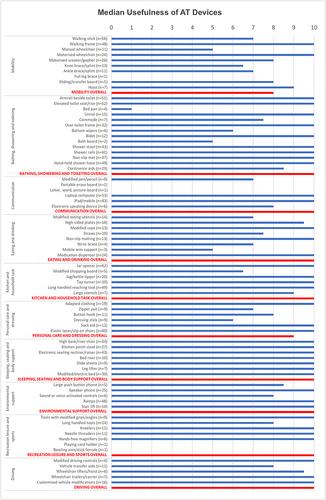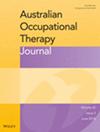Consumer-driven evaluation of assistive technology usage and perceived value in people with myositis in Australia
Abstract
Introduction
Idiopathic inflammatory myopathies (known as ‘myositis’) are a group of rare sporadic inflammatory muscle disorders that significantly impact function and quality of life. There are no standardised approaches in the use of assistive technologies in myositis. This study was initiated to investigate current use and perceived value of assistive technology (AT) by people with myositis.
Methods
A cross-sectional online questionnaire (Qualtrics) was designed to capture information regarding AT use and perceived value and demographic information from people with myositis across Australia. The questionnaire was distributed via the Myositis Association of Australia and specialist myositis clinics. Participants were asked to identify which AT items they owned and how frequently the item was used and to rate the ‘usefulness’ of those items. Information was also collected on participants' engagement with health professionals regarding assistive technologies.
Consumer and community involvement
Consumer involvement via the Myositis Research Consumer Panel identified a knowledge gap regarding AT. The questionnaire was designed with consumer input and review.
Results
One hundred two people (102) with myositis completed the questionnaire. One hundred (100) participants owned at least one AT device, with a median of 12.5 items and a maximum of 65 items. The most used devices were associated with toileting, personal care and mobility. Participants rated AT devices relating to environmental support, sleeping, seating and body support as most useful. There was a positive correlation between disease duration and number of devices used (r2 = 0.248, p = 0.012). Majority of participants (75.5%) were interested in talking to health professionals about AT; however, only 50% had done so.
Conclusion
AT device usage is high among people with myositis, with most items deemed to be useful. Greater occupational therapy input into recommendations and potential funding options may improve knowledge and access to AT.


 求助内容:
求助内容: 应助结果提醒方式:
应助结果提醒方式:


